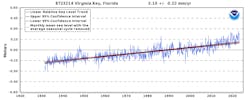Wow. That was quick.
When Clark’s Remarks premiered in June 2013, my first topic was ‘179D’ (Sect. 179D of the Internal Revenue Code), the commercial-building energy-efficiency tax deductions authorized by the Energy Policy Act of 2005. At that time, the deduction was expiring, so I was encouraging support for Congress to extend the provision.
After that, continuation of 179D was reprised at least three times, in 2014, 2017, and 2020, with the goal of having it become permanent. Since it was included in the Inflation Reduction Act, its likelihood of being a permanent part of the tax code appears better than ever. Several years ago, a broad coalition of 179D advocates, from industry and NGOs, was formed. Represented by international law firm K&L Gates LLP, it lobbied tirelessly for 179D.
(Kudos to Karishma Page, Lauren Flynn, and the rest of the K&L team for their hard work over the years.)
In subsequent columns, now numbering well over 100, the topics that I have returned to the most have been climate change and sea level rise, refrigerants and refrigerant additives, and related industry initiatives and governmental regulations.
In 2015, I first wrote about hydrochlorofluorocarbons (HCFCs) like R-22, that had replaced chlorofluorocarbons (CFCs) – the really bad players for ozone depletion, like R-11 and R-12 – and were now themselves being targeted for phaseout. These HCFCs had medium ODP (Ozone Depleting Potential) and GWP (Global Warming Potential), and were scheduled to be phased out over a much longer time frame. That set the stage for hydrofluorocarbon (HFC) refrigerants, such as R-134a, R-404a, and R-410a, to gain prominence.
Today, of course, the HVACR industry is undergoing yet another refrigerant transition, as those HFCs are being phased down in favor of new, lower-GWP refrigerants, such as R-32 and R-454B. Various refrigerant additives, such as polarized refrigerant oil additives (PROAs) and synthetic refrigeration additives (SRAs), have also been addressed over the years.
As a resident of coastal South Florida, sea-level rise is top of mind for me, and I first wrote about it in 2013.
Since then, it has been the focus – or I have at least mentioned it – in at least seven more essays here. According to NOAA, the sea level in Miami is rising at an average rate of approximately 3 mm per year (the chart below is the sea level trend for Virginia Key, a barrier island in Key Biscayne, relative to the most recent Mean Sea Level datum).
Most climate scientists agree that sea-level rise is caused primarily by two factors related to global warming: the added water from melting ice sheets and glaciers, plus the expansion of seawater as it warms. Of course, that segues nicely into by far the most recurring topic of Clark’s Remarks over the past decade: climate change.
Because climate change has influenced so much here, it is difficult to say exactly how many times it has been discussed or referred to, directly or indirectly, in my writing. In May 2013, according to NOAA, the combined average temperature over global land and ocean surfaces was 0.66°C (1.19°F) above the 20th century average of 14.8°C (58.6°F). (Last month, May 2023, it was 0.97°C (1.75°F) above the 20th century average.)
The overarching goal of the 2105 Paris Agreement – arguably the most important international response to climate change – was to hold “the increase in the global average temperature to well below 2°C above pre-industrial levels” and pursue efforts “to limit the temperature increase to 1.5°C above pre-industrial levels.”
In recent years, as a result of the UN’s Intergovernmental Panel on Climate Change determination that crossing the 1.5°C threshold risks more frequent and severe weather events, the goal has been intensified to limit global warming to 1.5°C by the end of this century. In order to achieve that goal, greenhouse gas emissions must peak before 2025 and decline 43% by 2030.
So, there is much important work right in front of us now, as I embark on my second decade of these columns.
I look forward to sharing that journey with all of you.
In the meantime, I would like to thank HPAC Engineering for its strong position on critical environmental issues over the years, and to its editor Rob McManamy, as well as his predecessor, Scott Arnold, for allowing me to use this platform for the past decade. Along the way, perhaps I have even changed the minds of a few climate change deniers and influenced some politicians on both sides of the aisle who had been reluctant to follow the science.
At the end of the day, we engineers know that is always our most reliable guide.
##########
A contributor to HPAC Engineering since 2013 and a member of its editorial advisory board, the author is a principal at Sustainable Performance Solutions LLC, a south Florida-based engineering firm focusing on energy and sustainability. He can be reached at [email protected].
About the Author
Larry Clark
A member of HPAC Engineering’s Editorial Advisory Board, Lawrence (Larry) Clark, QCxP, GGP, LEED AP+, is principal of Sustainable Performance Solutions LLC, a South Florida-based engineering firm focused on energy and sustainability consulting. He has more than two dozen published articles on HVAC- and energy-related topics to his credit and frequently lectures on green-building best practices, central-energy-plant optimization, and demand-controlled ventilation.

